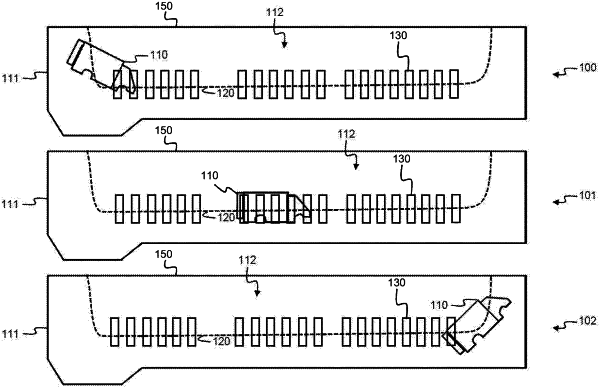| CPC G06F 30/20 (2020.01) [C25D 21/12 (2013.01); G06F 17/13 (2013.01); G06F 30/23 (2020.01); G06F 2111/10 (2020.01)] | 14 Claims |

|
1. A computer-implemented method for modelling an electrochemical process, the method comprising following steps:
generating, with a processor, a model of an object or set of objects in a container containing an electrolyte and counter electrodes, the container bounded by walls and the electrolyte bounded by the container walls, the counter electrodes and a meniscus,
enclosing the model of the object or the set of objects and a first portion of the electrolyte by a control surface generated by the processor, said control surface being surrounded by a second portion of the electrolyte;
generating a mesh on the control surface, said mesh comprising elements defining a discretized shape of the control surface;
generating, with the processor, a mesh on the object or set of objects, said mesh comprising elements defining a discretized shape of the object or set of objects;
generating, with the processor, a mesh on the container walls, counter electrode surfaces and electrolyte meniscus, said mesh comprising elements defining a discretized shape of the container walls, counter electrode surfaces and electrolyte meniscus;
generating, with the processor, a mesh of the first portion of the electrolyte contained within the control surface, said mesh comprising elements defining a discretized shape of the first portion of the electrolyte contained within the control surface;
generating, with the processor, a mesh of the second portion of the electrolyte surrounding the control surface, said mesh comprising elements defining a discretized shape of the second portion of the electrolyte surrounding the control surface; and
determining, with the processor, approximate and/or analytical solutions of partial differential equations describing said electrochemical process in each element of the mesh on the control surface, the mesh on the object or set of objects and/or the mesh of the second portion of the electrolyte surrounding the control surface.
|